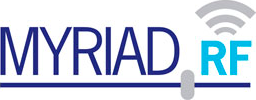I know, when I get time to tinker with Windows again, I will post proper bugreport. To be fair, I have to say that I don’t like the idea of tinkering with Windows much :-/ I know I can use that time much more efficiently (implementing new features, etc.). It would be great if some Windows user can do it instead.
I have prepared soapy_power and QSpectrumAnalyzer to work on Windows (I have fixed issue with pipes on Windows and even SciPy is now only optional dependency), so the only problem that remains is SoapySDR freeze (timeout error) in readStream.
